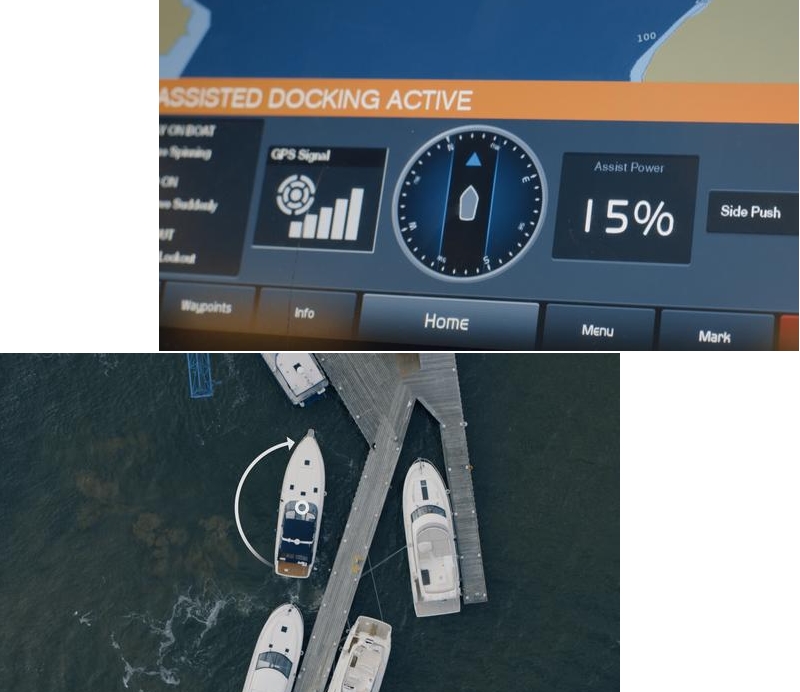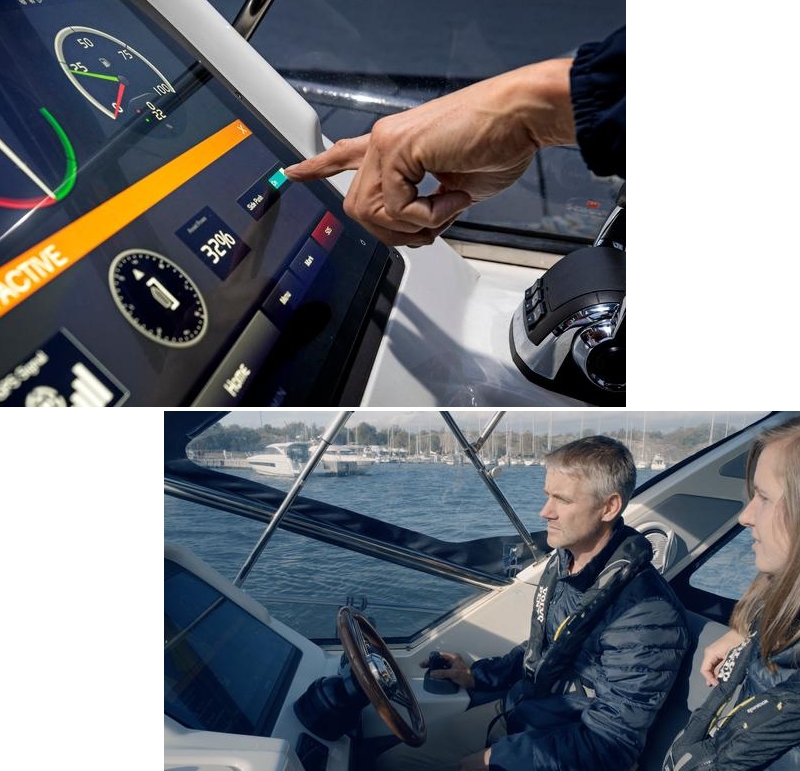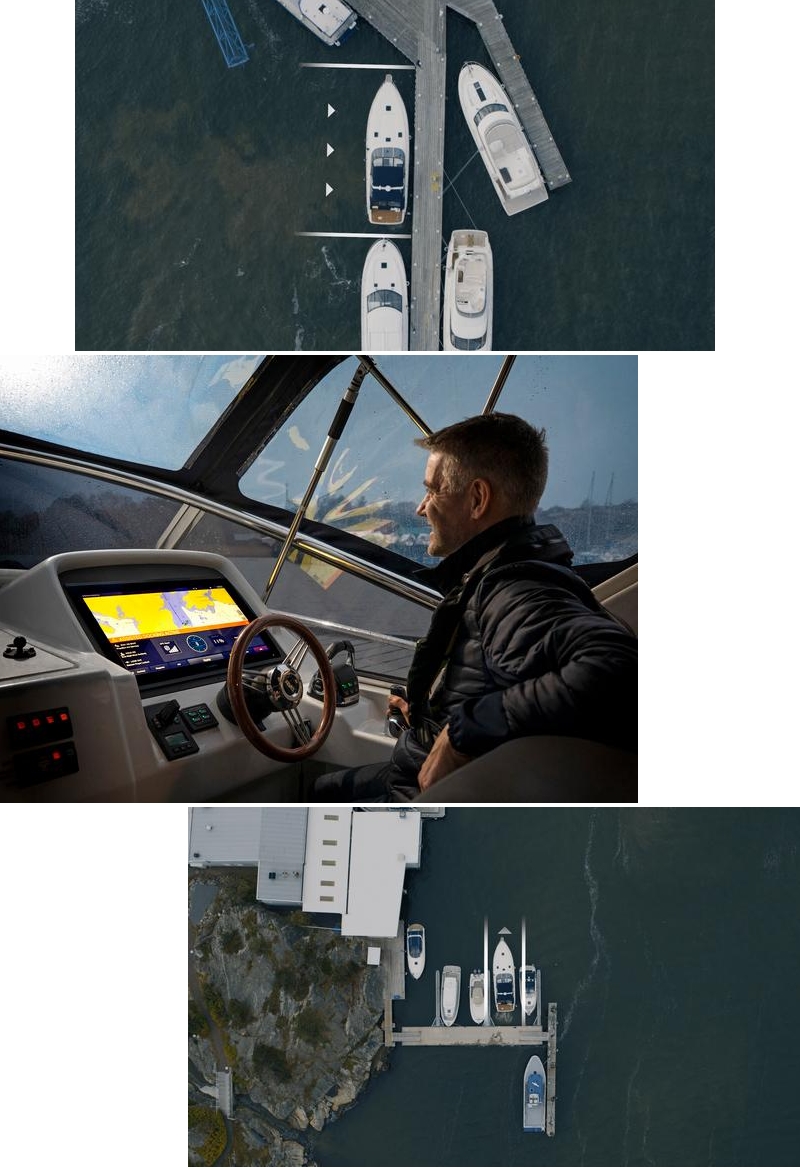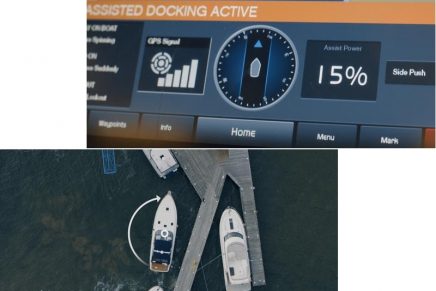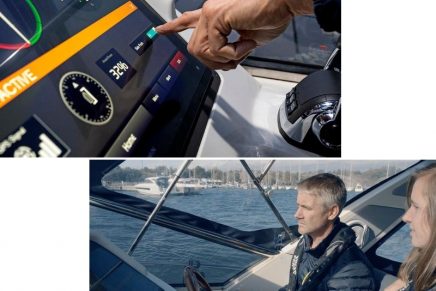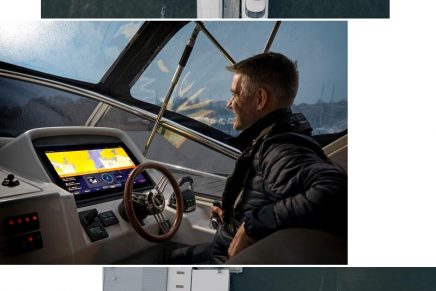First Fully Integrated Assisted Docking system debuts at CES 2021.
The Assisted Docking is another important step toward self-docking and easy boating.
Docking can be one of the most stressful and challenging aspects of boating – even for experienced captains. The Assisted Docking system gives the captain better control when docking a boat by automating his or her intentions, compensating for some dynamic variables, such as wind and current, and helping the vessel stay on its intended course.
Volvo Penta unveiled the industry’s first fully integrated Assisted Docking system against the backdrop of the Consumer Electronics Show (CES).
In 2018, the company unveiled its self-docking yacht prototype via a live demo event at the Volvo Ocean Race in Gothenburg, Sweden. Since then, Volvo Penta has been gathering input from key stakeholders and customers, evolving and testing the concept with its research and development team to deliver a product that would best meet the needs of both the experienced boater and those new to the pastime. This led to the development of Assisted Docking, the next step in modern, easy boating.
Volvo Penta has now taken its joystick-docking technology and easy boating solutions to the next level in its continued efforts to make docking a less stressful endeavor.
The main features of the 2021 boat docking system are: moving in straight lines without manual compensation, standing still, slow maneuvering functionality, rotating around a fixed point, micro re-positioning and alignment, and side push for sideways docking.
The Assisted Docking system integrates a software layer developed in house with the Volvo Penta’s GPS-based Dynamic Positioning System and proprietary Inboard Performance Systems (IPS) for a complete package including HMI (human-machine interface) at the helm, electronics via the engine, propulsion systems and sensors, and advanced navigation processing power for a much easier boating experience, even in rough conditions.
The Assisted Docking system consists of the joystick that controls the steering input and the GPS-based Dynamic Positioning System antenna to know the exact position and heading. The captain maneuvers the vessel with the joystick – thereby informing the system which direction it should head in and at what speed. If you move the joystick forward, the system lays out a path straight forward from the boat and the boat starts to follow a straight line with the indicated speed. The boat docking system also takes into account certain external forces (i.e. wind, current) and the EVC system – upgraded with in-house developed software – compensates to ensure
the boat follows the captain’s intentions. It does this by calculating drive angles and thrust, then acts on the drift and moves the boat back to its intended course. The boat docking system keeps this course by constantly fine-tuning the steering angles and thrust.
Volvo Penta’s ‘Easy Boating’ philosophy is to make boating simpler, enjoyable and accessible to more people. The Assisted Docking system will be available in spring 2021 for installation on new boat models, as an upgradeable option for Volvo Penta IPS-equipped motor yachts sized 35ft to 120ft long, and as a retrofit – which will require a software upgrade and new antenna – for existing Volvo Penta IPS-powered boats. The Assisted Docking system will be sold directly to Original Equipment Manufacturers.
“When we launched our joystick technology in 2006, the maneuvering and control functionality it brought to leisure boating shook up the marine industry – delivering game-changing innovation is in our DNA,” explains Anders Thorin, Product Manager Electronics at Volvo Penta. “From our Electronic Vessel Control (EVC) system, which connects and manages the internal communications between the engine and driveline, joystick and display screen so the driver can control everything from the joystick – to our Dynamic Positioning System (DPS), which automatically maintains a boat’s heading and position, even in rough conditions – to today with the release of the Assisted Docking system, we take the next step in easy boating and continue our long-held ambition to make
docking a boat easier for a more enjoyable boating experience.”
“Assisted Docking is a hybrid between automated docking and manual docking,” says Ida Sparrefors, Director of Autonomous Solutions and New Business Models at Volvo Penta. “Even though, in some ways, it would have been easier to implement full automation, the beauty of this system is that it gives the captain enhanced control. With our team of experts – from software developers to test drivers – we have made it behave intuitively in all situations, so that anyone can feel like a seasoned captain.”

